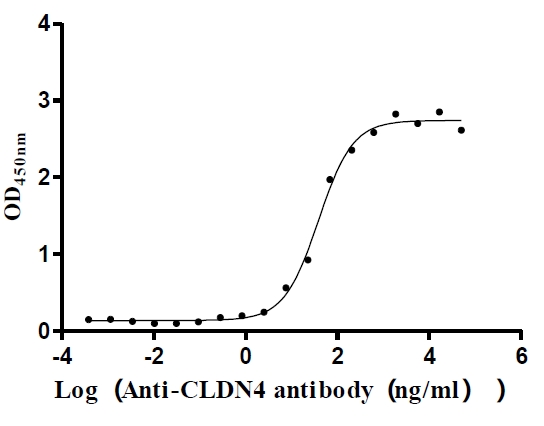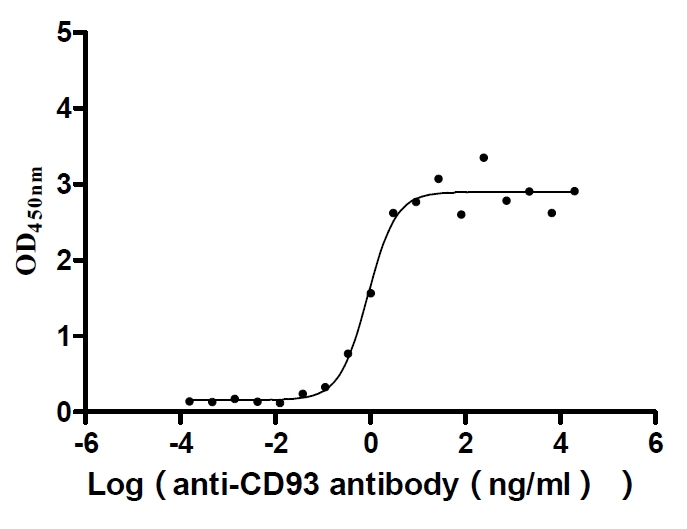Recombinant Arabidopsis thaliana Putative chromatin-remodeling complex ATPase chain (At3g06400), partial
-
中文名稱:Recombinant Arabidopsis thaliana Putative chromatin-remodeling complex ATPase chain(At3g06400) ,partial
-
貨號:CSB-YP837286DOA
-
規(guī)格:
-
來源:Yeast
-
其他:
-
中文名稱:Recombinant Arabidopsis thaliana Putative chromatin-remodeling complex ATPase chain(At3g06400) ,partial
-
貨號:CSB-EP837286DOA
-
規(guī)格:
-
來源:E.coli
-
其他:
-
中文名稱:Recombinant Arabidopsis thaliana Putative chromatin-remodeling complex ATPase chain(At3g06400) ,partial
-
貨號:CSB-EP837286DOA-B
-
規(guī)格:
-
來源:E.coli
-
共軛:Avi-tag Biotinylated
E. coli biotin ligase (BirA) is highly specific in covalently attaching biotin to the 15 amino acid AviTag peptide. This recombinant protein was biotinylated in vivo by AviTag-BirA technology, which method is BriA catalyzes amide linkage between the biotin and the specific lysine of the AviTag.
-
其他:
-
中文名稱:Recombinant Arabidopsis thaliana Putative chromatin-remodeling complex ATPase chain(At3g06400) ,partial
-
貨號:CSB-BP837286DOA
-
規(guī)格:
-
來源:Baculovirus
-
其他:
-
中文名稱:Recombinant Arabidopsis thaliana Putative chromatin-remodeling complex ATPase chain(At3g06400) ,partial
-
貨號:CSB-MP837286DOA
-
規(guī)格:
-
來源:Mammalian cell
-
其他:
產(chǎn)品詳情
-
純度:>85% (SDS-PAGE)
-
基因名:CHR11
-
Uniprot No.:
-
別名:CHR11; At3g06400; F24P17.13; ISWI chromatin-remodeling complex ATPase CHR11; EC 3.6.4.-; ISW2-like; Protein CHROMATIN REMODELING 11; Sucrose nonfermenting protein 2 homolog
-
種屬:Arabidopsis thaliana (Mouse-ear cress)
-
蛋白長度:Partial
-
蛋白標簽:Tag?type?will?be?determined?during?the?manufacturing?process.
The tag type will be determined during production process. If you have specified tag type, please tell us and we will develop the specified tag preferentially. -
產(chǎn)品提供形式:Lyophilized powder
Note: We will preferentially ship the format that we have in stock, however, if you have any special requirement for the format, please remark your requirement when placing the order, we will prepare according to your demand. -
復溶:We recommend that this vial be briefly centrifuged prior to opening to bring the contents to the bottom. Please reconstitute protein in deionized sterile water to a concentration of 0.1-1.0 mg/mL.We recommend to add 5-50% of glycerol (final concentration) and aliquot for long-term storage at -20℃/-80℃. Our default final concentration of glycerol is 50%. Customers could use it as reference.
-
儲存條件:Store at -20°C/-80°C upon receipt, aliquoting is necessary for mutiple use. Avoid repeated freeze-thaw cycles.
-
保質(zhì)期:The shelf life is related to many factors, storage state, buffer ingredients, storage temperature and the stability of the protein itself.
Generally, the shelf life of liquid form is 6 months at -20°C/-80°C. The shelf life of lyophilized form is 12 months at -20°C/-80°C. -
貨期:Delivery time may differ from different purchasing way or location, please kindly consult your local distributors for specific delivery time.Note: All of our proteins are default shipped with normal blue ice packs, if you request to ship with dry ice, please communicate with us in advance and extra fees will be charged.
-
注意事項:Repeated freezing and thawing is not recommended. Store working aliquots at 4°C for up to one week.
-
Datasheet :Please contact us to get it.
靶點詳情
-
功能:Possesses intrinsic ATP-dependent nucleosome-remodeling activity. Constitutes the catalytic subunit of several complexes capable of forming ordered nucleosome arrays on chromatin. Involved in the formation of nucleosome distribution patterns. Involved in nuclear proliferation during megagametogenesis and cell expansion in the sporophyte. Required for the maintenance of the plant vegetative phase. In association with RLT1 or RLT2 may prevent the early activation of the vegetative-to-reproductive transition by regulating key genes that contribute to flower timing, such as FT, SEP1, SEP3, AGL8/FUL, SOC1 and FLC. Necessary to acquire heat stress (HS) memory.
-
基因功能參考文獻:
- AtISWI is involved in the formation of the evenly spaced pattern of nucleosome arrangement in gene bodies-this pattern is associated with high transcriptional levels of genes.[review] PMID: 28213686
- Data indicate that double mutations in the AtISWI genes, CHROMATIN REMODELING 11 (CHR11) and CHR17, resulted in the loss of the evenly spaced nucleosome pattern in gene bodies. PMID: 24606212
- AtISWI proteins, CHR11 and CHR17, and RLTs represent a previously unrecognized genetic pathway that is required for the maintenance of the plant vegetative phase. [CHR11] PMID: 22694359
- Essential for haploid nuclear proliferation during megagametogenesis and cell expansion during the sporophytic phase of the plant life cycle [CHR11] [CHROMATIN REMODELING COMPLEX subunit 11] PMID: 16286646
-
亞細胞定位:Nucleus.
-
蛋白家族:SNF2/RAD54 helicase family, ISWI subfamily
-
組織特異性:Highly expressed in growing tissues such as inflorescence and flower meristems, young leaves and floral organs. Expressed in roots, rosette and cauline leaves, stems, flowers, inflorescences and siliques.
-
數(shù)據(jù)庫鏈接:
Most popular with customers
-
Recombinant Macaca fascicularis Angiotensin-converting enzyme (ACE2), partial (Active)
Express system: Mammalian cell
Species: Macaca fascicularis (Crab-eating macaque) (Cynomolgus monkey)
-
Recombinant Human Tumor necrosis factor ligand superfamily member 8 (TNFSF8), partial (Active)
Express system: Mammalian cell
Species: Homo sapiens (Human)
-
Recombinant Human B-lymphocyte antigen CD20 (MS4A1)-VLPs (Active)
Express system: Mammalian cell
Species: Homo sapiens (Human)
-
Recombinant Human C-X-C chemokine receptor type 4 (CXCR4)-VLPs (Active)
Express system: Mammalian cell
Species: Homo sapiens (Human)
-
Recombinant Dog B-lymphocyte antigen CD20 (MS4A1)-VLPs (Active)
Express system: Mammalian cell
Species: Canis lupus familiaris (Dog) (Canis familiaris)
-
Recombinant Human Claudin-4 (CLDN4)-VLPs (Active)
Express system: Mammalian cell
Species: Homo sapiens (Human)
-
Recombinant Human Complement component C1q receptor (CD93), partial (Active)
Express system: Mammalian cell
Species: Homo sapiens (Human)
-
Express system: Mammalian cell
Species: Homo sapiens (Human)


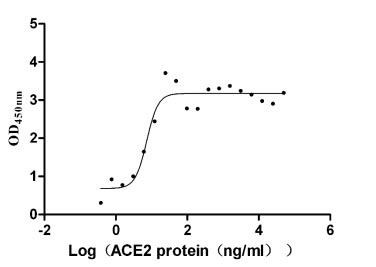
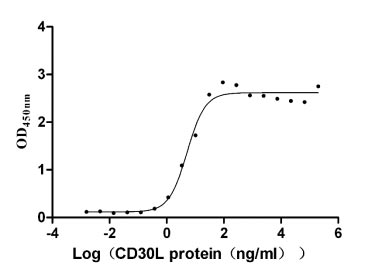
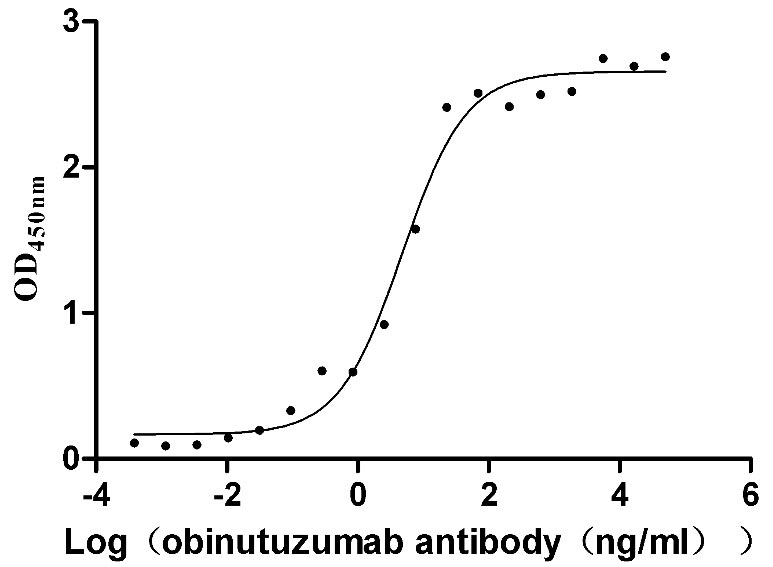
-AC1.jpg)

